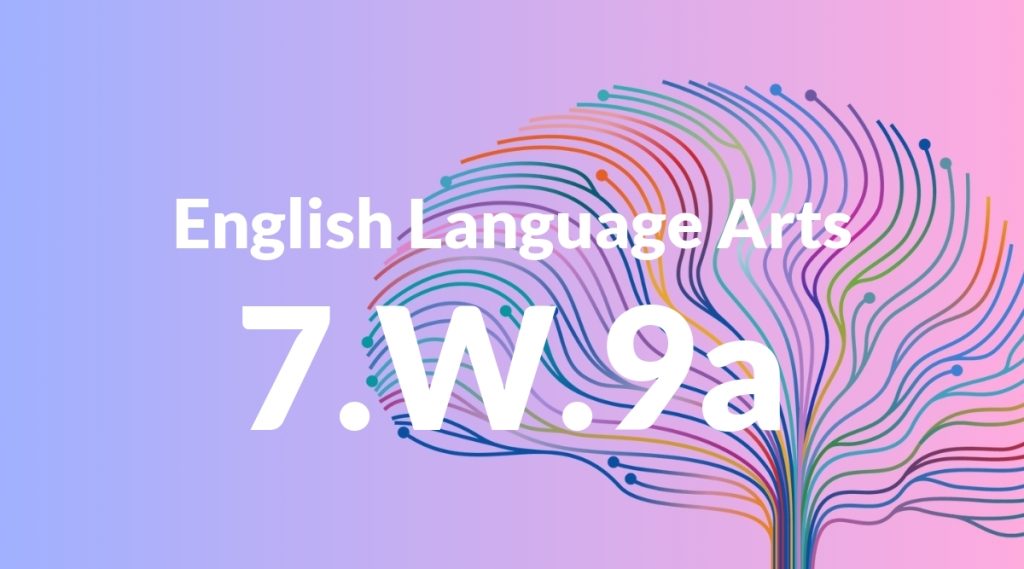Standard: 7.W.9a – Apply grade 7 Reading standards to literature (e.g., “Compare and contrast a fictional portrayal of a time, place, or character and a historical account of the same period as a means of understanding how authors of fiction use or alter history”).
Grade level: Grade 7
Subject: English Language Arts
Domain: Writing
Teacher Overview
This standard focuses on students’ ability to compare and contrast fictional portrayals of historical events, places, or characters with actual historical accounts. It is important because it helps students understand how authors use or alter history for storytelling purposes, enriching their critical thinking and analytical skills. Students should have a basic understanding of literary elements and historical periods to effectively compare and contrast fictional and historical accounts.
After mastering this standard, students will be able to critically analyze texts, understand the purpose behind an author’s alteration of history, and improve their comparative writing skills.
Common Misconception 1
Some students may believe that historical fiction is completely accurate. This is incorrect because authors often take creative liberties to enhance the story or convey particular themes.
Intervention 1
Encourage students to research the historical period or event depicted in the fiction and compare it with the fictional portrayal to identify differences and understand the reasons behind the author’s choices.
Common Misconception 2
Another misconception is that historical fiction is not educational. This is incorrect because historical fiction can provide valuable insights into historical contexts and human experiences that are not captured in pure historical texts.
Intervention 2
Use examples of well-known historical fiction to demonstrate how these stories can enhance understanding of historical events and periods by providing a narrative context.
Prerequisite Knowledge
Students should be familiar with basic literary elements such as plot, character, and setting, as well as having a foundational understanding of historical events and periods.
Subsequent Knowledge
Students will develop the ability to critically analyze texts, understanding the purpose behind an author’s alteration of history, and will improve their comparative writing skills.
Instructional Activities
- Read and discuss a historical fiction novel and its historical background.
- Watch a movie based on historical events and compare it with actual historical accounts.
- Write an essay comparing a fictional portrayal of a historical event with the historical facts.
- Create a presentation on how an author has altered historical facts in their work.




